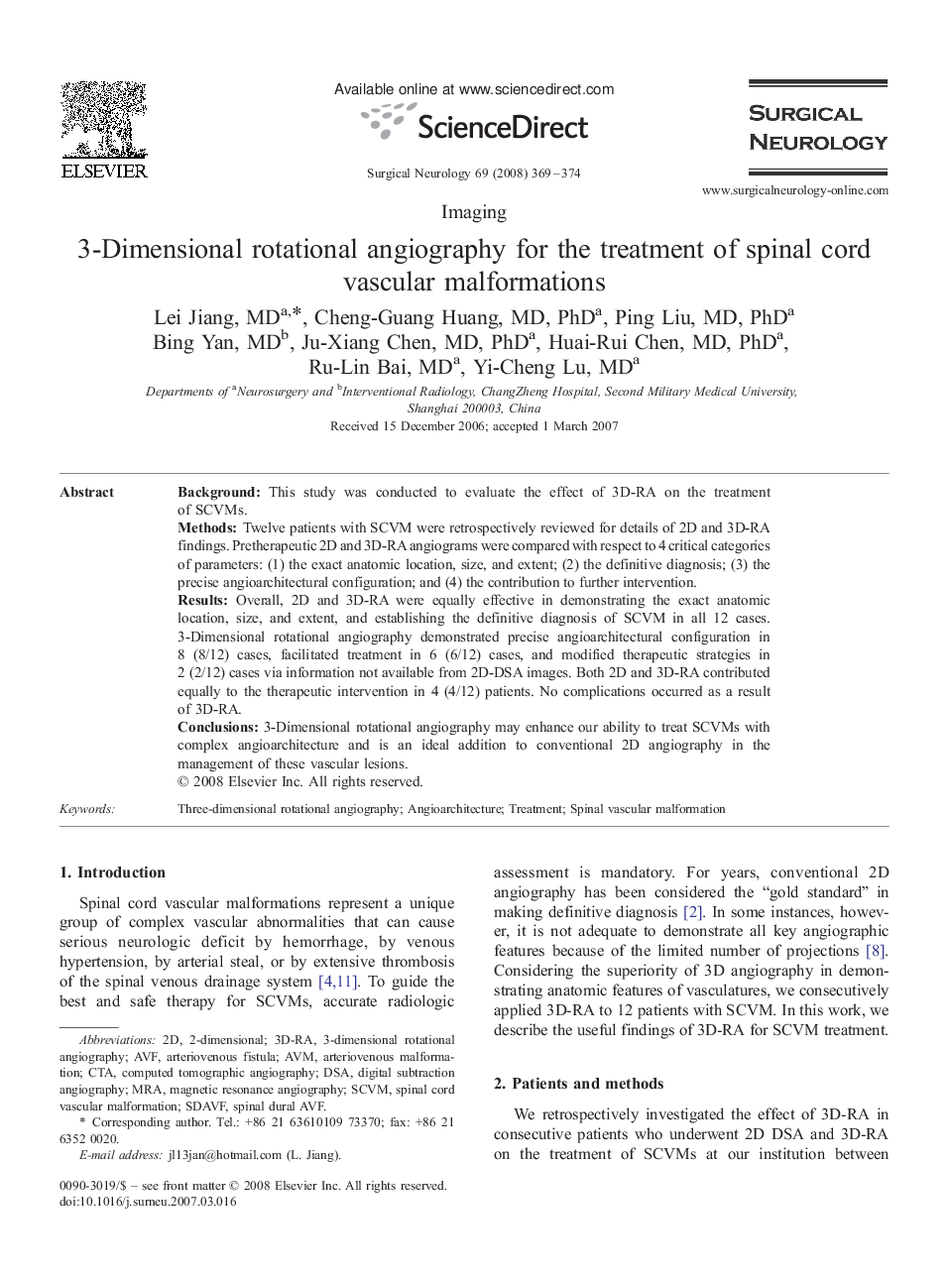| Article ID | Journal | Published Year | Pages | File Type |
|---|---|---|---|---|
| 3093002 | Surgical Neurology | 2008 | 5 Pages |
BackgroundThis study was conducted to evaluate the effect of 3D-RA on the treatment of SCVMs.MethodsTwelve patients with SCVM were retrospectively reviewed for details of 2D and 3D-RA findings. Pretherapeutic 2D and 3D-RA angiograms were compared with respect to 4 critical categories of parameters: (1) the exact anatomic location, size, and extent; (2) the definitive diagnosis; (3) the precise angioarchitectural configuration; and (4) the contribution to further intervention.ResultsOverall, 2D and 3D-RA were equally effective in demonstrating the exact anatomic location, size, and extent, and establishing the definitive diagnosis of SCVM in all 12 cases. 3-Dimensional rotational angiography demonstrated precise angioarchitectural configuration in 8 (8/12) cases, facilitated treatment in 6 (6/12) cases, and modified therapeutic strategies in 2 (2/12) cases via information not available from 2D-DSA images. Both 2D and 3D-RA contributed equally to the therapeutic intervention in 4 (4/12) patients. No complications occurred as a result of 3D-RA.Conclusions3-Dimensional rotational angiography may enhance our ability to treat SCVMs with complex angioarchitecture and is an ideal addition to conventional 2D angiography in the management of these vascular lesions.
